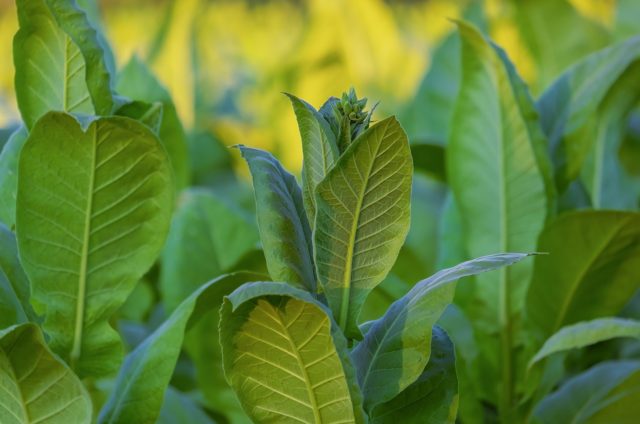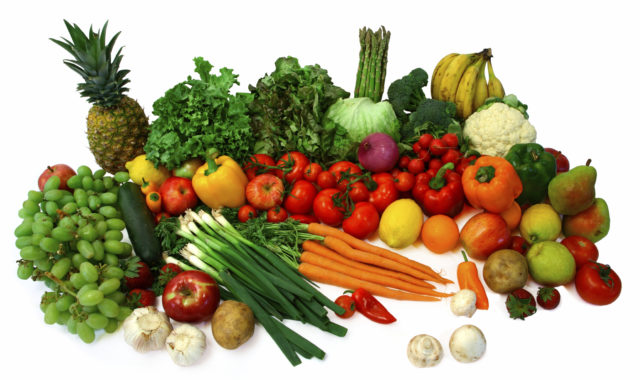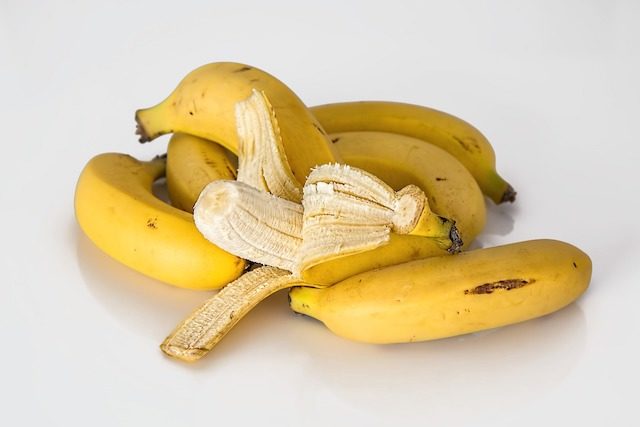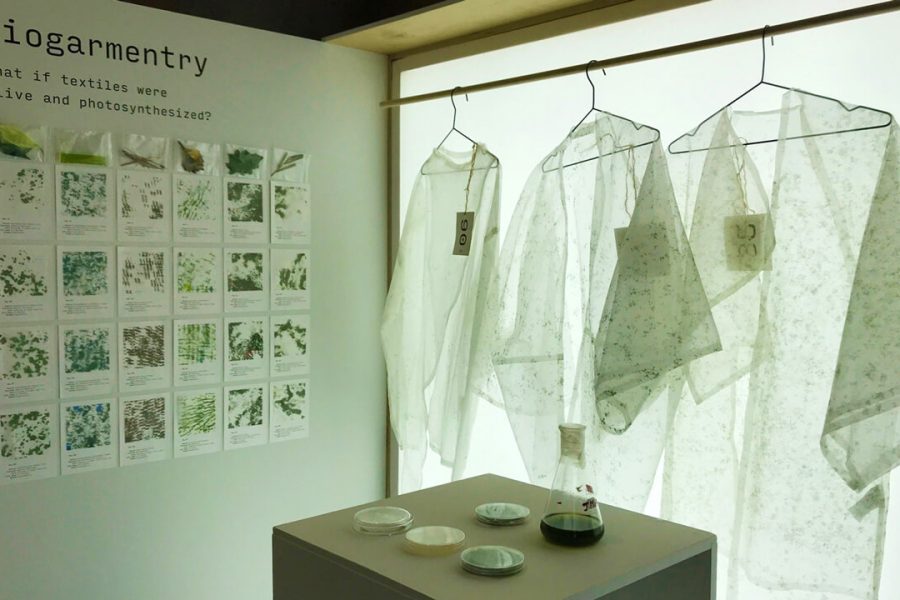Advances in bioengineering have made it theoretically possible to do almost anything with plants. In fact, many of the plants we have today have already changed beyond recognition from what they used to be. Carrots originally had white, skinny roots; peaches were salty and the size of cherries; watermelons were small and bitter; and eggplants looked like eggs.
Our world – or at least our supermarkets and gardens – would look different without genetic modification. However, GM crops also have significant drawbacks, and for all their promises to help us out of our messes, it is clear how they bring us more.
However, here are some of the most inventive and daring ways that people won't leave alone.
10. Super Air Purifying Pothos

Our typical human approach to cleaning the air with fuel-guzzling electric air purifiers only makes the problem worse. To provide an alternative, a French company called Neoplants has genetically modified the pothos plant down to its roots to process airborne pollutants. They call it Neo P1, and it apparently “can do the air-cleaning work of up to 30 plants.”
Plants are naturally better at absorbing and metabolizing volatile organic compounds (VOCs), but Neo P1 has been engineered to excel, especially against indoor VOCs like benzene, ethylene glycol, formaldehyde, and toluene. Nothing is wasted; the compounds are broken down and recycled into the water, sugars, and amino acids Neo P1 needs to grow, plus oxygen to release into the air. To boost its effectiveness, the plant’s roots also contain genes for extremophile bacteria (bacteria that have evolved to survive inhospitable environments by feeding on toxins).
As the name of their first plant suggests, Neoplants hope to create more air-purifying plants in the future. They also see their work as useful in the “fight” against climate change.
9. Nitrogen-fixing crops

Rightly or wrongly, we're obsessed with dietary protein. And legumes (beans, pulses, peanuts) are among the best plant sources—not just because of how much protein they contain, but because of how they make it.
Protein requires nitrogen, which is limited in bioavailability (i.e., available for use by organisms), so it is added to fertilizers. However, unlike most plants, legumes pluck it from the air. This is called “nitrogen fixation.” Genetically modifying other staple crops to do the same would revolutionize agriculture worldwide, especially in poor countries, by eliminating the need for expensive, climate-worse fertilizers.
But critics say it will take a long time, and point to existing problems with GM crops, such as herbicide-resistant weeds. And there are clearly other, more direct ways to tackle global poverty.
8. Cocaine tobacco

This is an indirect game changer. Don't expect your local dealer to offer a special new kind of shiny white tobacco. Researchers were interested in genetically modified plants to produce cocaine to study its evolution as a pesticide and its potential use in medicine.
The production of cocaine by coca plants has long been shrouded in mystery, partly because of the labor-intensive nature of growing coca in a lab. The answer that Chinese scientists came up with was to genetically reconstruct the cocaine-making pathway in the tobacco plant's genome. They left some parts of the chain to the tobacco plant to figure out, and the result was tobacco leaves that contain cocaine. The implications for drug discovery are significant.
The amount of cocaine produced was not enough to make it a viable black market operation, the researchers said, and the process was too technical for the average clandestine drug lab anyway. But the researchers themselves are working on it, hoping to increase the tobacco factory's output.
7. Cabbage with scorpion venom

Genetic modification and pesticides are the two most toxic contributions humans have made as a species. So why not combine them into one? In an attempt to seal the damage we’ve done, scientists have taken the venom gene from the tails of deadly scorpions, engineered it to kill only insects, and put it in cabbage. What could go wrong?
While early tests have confirmed no toxicity to humans, the concept is fraught with problems. For one, the study tested human breast cancer cells in vitro, not healthy human cells in vivo. And the cabbage itself could be at risk. The genetic modification could escape and contaminate unmodified samples. And, as with existing pesticides, it could destabilize entire ecosystems.
But the FDA has a long history of ignoring such concerns when approving GMOs, even when they do nothing. In this case, since the pesticidal effect of the poison cabbage depends on the insects actually eating it, it’s likely that farmers will also use pesticide sprays to keep the insects at bay. In other words, consumers will get double the toxins.
6. Oak Endospore

Oak trees, scientists say, are maddeningly inefficient. Not only do they produce far more acorns than they ever root, they also waste millions of cells shedding their leaves each fall. What if, instead of rotting on the ground, those cells turned into millions of wind-borne spores, each capable of cloning its source? That would be a better evolutionary strategy, and there seems to be “no biological principle… prohibiting… [reproduction] by either spores or seeds.” And, unlike acorns, endospores can remain viable for millions of years.
But again, there are serious problems. Endospore oaks are one thing, but what about endospore knotweed? Unless this particular genetic modification is strictly limited to “useful plants” (and even then), “superweeds could overrun the Earth.”
As always, just because we see a gap in the market, so to speak, doesn’t mean we should exploit it. After all, trees would also be more efficient if they evolved to “walk” faster than they currently do, and if they learned to hunt with poisonous gases or thorns. That’s just not the world most of us want.
5. Super Nutritious Fruits and Vegetables

Genetically modifying plants to provide greater nutritional value is nothing new. We already have protein-rich potatoes, corn, and rice; flaxseed high in omega-3 and -6; tomatoes with antioxidants from snapdragons; and lettuce with more absorbable iron. There are also carrots, which increase our absorption of calcium, and the so-called “golden banana,” an Australian fruit created by crossing a regular banana with an orange variety from Papua New Guinea that is high in provitamin A. However, low provitamin A levels are usually due to human intervention in the diet in the first place. So we are skeptical.
Scientists hoping to revolutionize our crops by 2028 are pinning their hopes on the ultra-precise gene editing CRISPR-Cas9. The possibilities are many (and silly): beans that taste like chicken nuggets; carrots that taste like potato chips; fries with hamburgers in the middle; and sunflower seeds the size of small eggs, so you can eat them like apples.
Some of the less childish ideas include hypoallergenic peanuts and lentils with the same amount of protein as meat. But they all raise questions about how much control humans should have over nature, especially given the mess we've made ourselves.
4. Polluting poplars

Phytoremediation is the process by which some plants clean up pollution — drawing pollutants up through their roots, breaking them down into harmless byproducts, and either using them or releasing them into the air. It’s another way to put plants to work to undo the damage we’ve done. But scientists say they’re not doing it well enough. They’re too slow.
The solution was to genetically modify poplar trees to break down trichloroethylene (TCE) more efficiently. TCE is the most common groundwater contaminant, found in the most polluted places in America. Once promoted by the pharmaceutical industry as an anesthetic, it is now a known carcinogen that lingers in the air, water, and soil wherever it is used. And given its continued use in many household cleaning products, the problem is only getting worse.
Still, research into genetically modified phytoremediation shows promise. While unmodified poplars removed only three percent of TCE from solution, poplars treated with extra enzymes from rabbit liver removed as much as 91 percent. They also fared better, not wilting as they normally would but actually becoming more robust. And they can deal not just with TCE, but with a host of other chemicals, including vinyl chloride (used to make plastics) and benzene (an air pollutant made from petroleum).
3. Grafting banana

The (artificially inflated) cost of vaccines means that third world countries often don't get them, and children continue to die from easily preventable diseases like diarrhea. One solution scientists have come up with is to genetically modify crops to insert vaccines into their genome.
An early proof of concept successfully delivered hepatitis B antigens to rats from specially engineered potatoes. However, since potatoes are not eaten raw, the research turned to bananas. Not only are they cheap, but they have a proven track record in “developing” countries. Just 10 hectares of vaccine banana plantations would be enough to vaccinate all children under five in Mexico, they say.
However, properly administering the vaccine banana is not as simple as peeling the skin and eating it. The plan is to puree the fruit and bottle it (10 doses per bottle) so that each patient gets the correct dose. Scientists have experimented with other crops, including lettuce, carrots and tobacco.
2. DARPA Intelligent Trees

In 2017, the Defense Advanced Research Projects Agency (DARPA) announced a call for proposals for its Advanced Plant Technologies (APT) program. They are particularly interested in genetically modifying plants to “gather information,” such as about environmental pathogens and radiation. Once they detect the presence of what they are designed to target, the “sentinel plants” would “communicate” through “subtle response mechanisms,” such as subtle changes in leaf color.
Unlike complex machinery, plants offer stealth, ease of distribution, and independence from energy. And the concept has already been proven. In 2011, researchers successfully engineered a TNT-detecting plant whose leaves bleach in the presence (in the soil or air) of TNT molecules. And all plants naturally respond to their environment through input/output dynamics comparable to those of computers. Like bomb-sniffing dogs, it’s simply a case of training nature’s mechanisms to better serve the military.
However, DARPA wants to go beyond simply turning biocomputing on and off, to more sophisticated detection and reliable, detailed reporting. They have even expressed interest in engineering installations to pick up electromagnetic signals.
1. Dyson tree
You’ve probably heard of a Dyson sphere. Proposed by physicist Freeman Dyson, it’s a hypothetical structure built to encircle a star and capture its energy. Less well known is the Dyson tree. Genetically engineered for space, with a thick glass bark to let in sunlight and prevent heat from escaping, this hypothetical plant would be seeded on a comet and create its own atmosphere. It could theoretically support an entire ecosystem – at least for a time – with the comet’s interior hollowed out for inhabitants, and the comet’s ice and carbon providing everything the “leafy spaceship” would need.
If this sounds like science fiction, that’s because it is. But it’s not beyond the realm of possibility. Plants like the voodoo lily and carrion flower produce their own heat; in fact, skunk cabbage generates up to 60 degrees Fahrenheit, enough to melt the frozen ground around it.
There’s also no shortage of comets. The Kuiper Belt beyond Neptune, which contains trillions of comets, could potentially be seeded with enough Dyson trees to become a cosmic “city-state archipelago.” A Dyson tree comet the size of Manhattan could feed millions of people on its own. And with little gravity, not only would it be easy to hop between comets, but the buildings on each one could be taller than those on Earth.













Оставить Комментарий